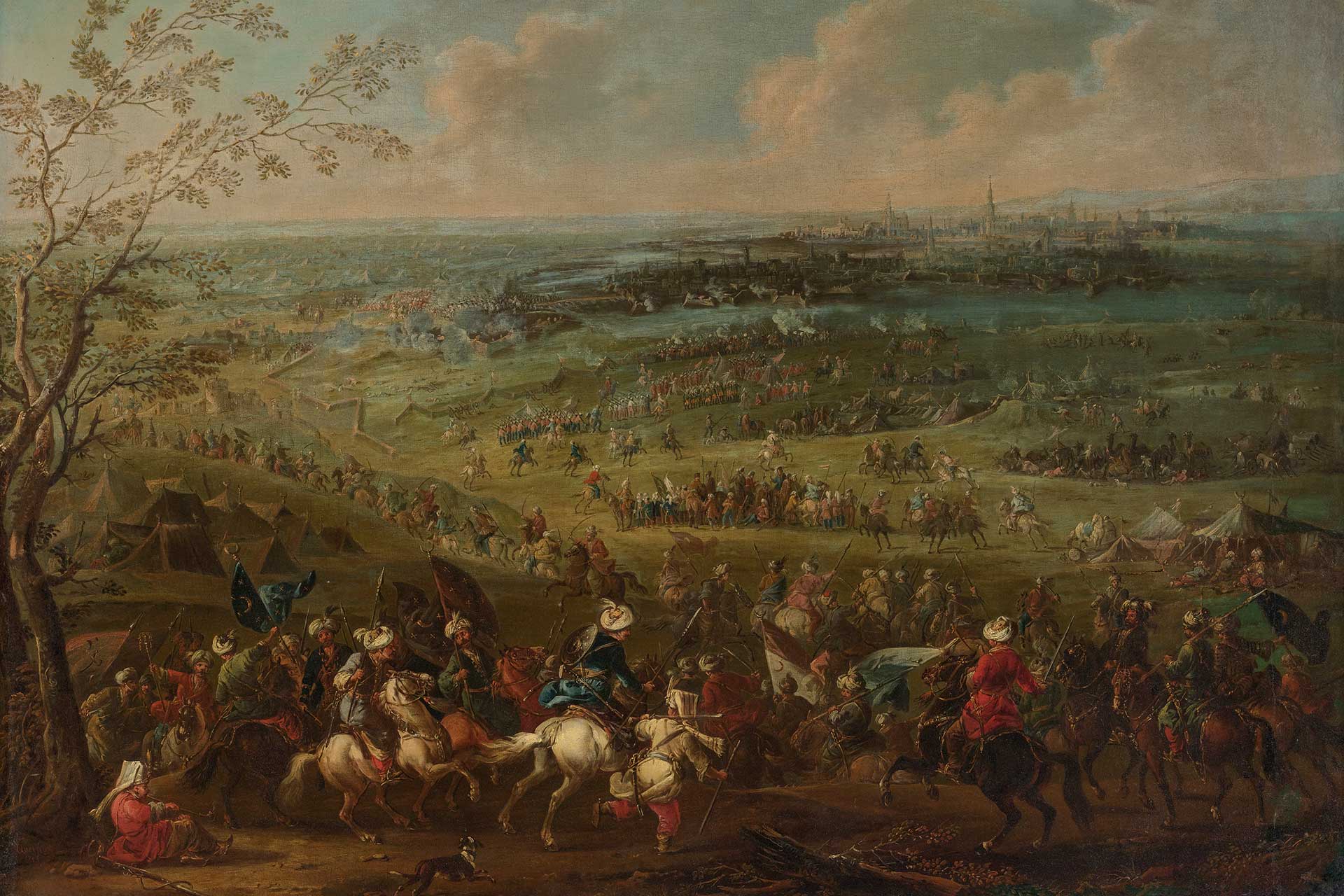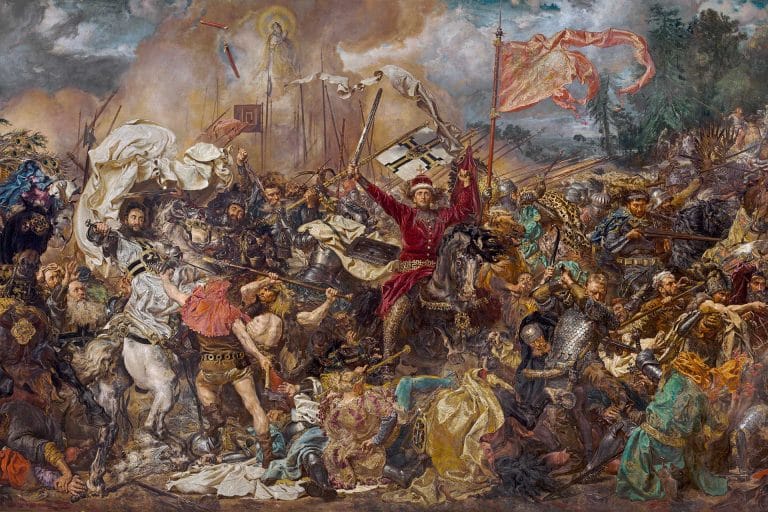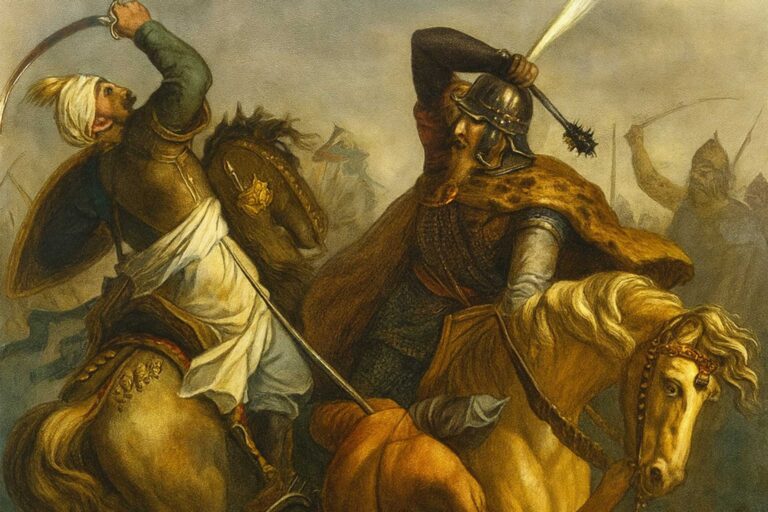Understanding The First Ottoman Siege Of Vienna – The Siege That Seized Ottoman Advances
Gateway to the West: The Siege of Vienna in 1529
The First Ottoman Siege of Vienna in 1529 marked a crucial halt in the expansive wave of the Ottoman Empire into Europe, stemming directly from the chaos of the Hungarian Civil War. Ottoman ruler Suleiman viewed Vienna as a gateway to dominating Central Europe. The siege represented not merely a military expedition but a climax of geopolitical tensions brewing over Hungary’s territorial and imperial ambitions.
At a strategic crossroads, Vienna’s defense was not just about protecting a city but safeguarding Western Europe’s cultural and political ethos. The Siege of Vienna unfolded against a backdrop of political alliances and military innovations, setting the stage for a dramatic showdown that would reshape the borders and future interactions between these two great powers.

Prelude to the Siege: Ottoman Ambitions and European Politics
The stage for the 1529 Siege of Vienna was set decades earlier, following the Ottoman victory at the Battle of Mohács in 1526. This pivotal battle saw Sultan Suleiman I decisively defeat the Hungarian forces under King Louis II, leading to the king’s untimely death and a power vacuum in Hungary. The aftermath left Hungary fragmented, with Archduke Ferdinand I of Austria and John Zápolya, a noble from Transylvania, vying for the throne. While Ferdinand secured the western part of Hungary with support from the Holy Roman Empire, Zápolya aligned with the Ottomans, accepting vassal status under Suleiman in exchange for his recognition as king of eastern Hungary and Transylvania.
This division of Hungary into Royal, Ottoman, and Transylvanian territories set the stage for ongoing conflict that would eventually draw in Vienna. A resilient Ottoman response thwarted Ferdinand’s attempts to reclaim all of Hungary. A potent Ottoman counter-attack reversed his brief capture of Buda in 1527, signaling Suleiman’s refusal to cede influence in the region. The shifting power dynamics in Eastern Europe highlighted the Ottoman Empire’s intentions to consolidate its gains and expand further into the continent’s heart.
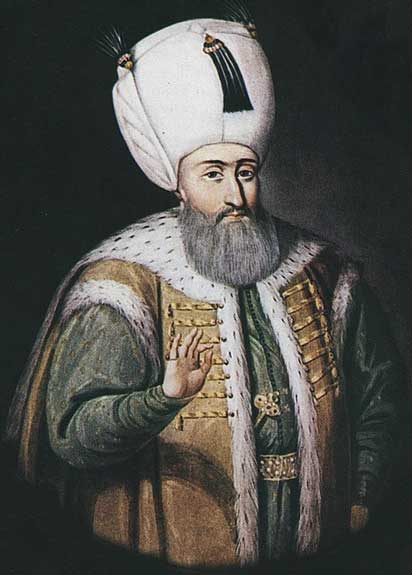
By the spring of 1529, Suleiman was preparing for an audacious campaign to secure Ottoman dominion over all of Hungary and directly challenge the European powers.
He assembled a massive force, reported by some sources to number up to 300,000 men, including elite Sipahi cavalry and janissaries. The campaign’s scale and including troops from across the Ottoman Empire underscored its strategic importance. However, the logistics of moving such a large army, including heavy artillery, across the Balkans were daunting. The treacherous conditions, marked by heavy spring rains, led to significant losses and challenges, yet Suleiman’s resolve remained firm.
As the Ottoman army advanced, it recaptured lost territories, including Buda, solidifying Suleiman’s control over Hungary. The march towards Vienna began with the Empire’s full might, setting the stage for a siege that would test the resilience of the Holy Roman Empire and mark a significant moment in the centuries-long conflict between the Ottomans and Europe. The siege of Vienna was not just a military engagement but a symbolic assertion of the Ottoman Empire’s claim to major European territories. This move would have profound implications for both Eastern and Western Europe.
Vienna’s Defense: A Multinational Effort
As the Ottoman forces approached Vienna in 1529, the city braced itself for a monumental siege. Under the threat of a massive military incursion, Vienna’s preparations were both urgent and comprehensive, drawing upon a mix of local militia and international support. Local citizens, including farmers and peasants, were mobilized alongside European mercenaries. The defense forces were notably augmented by 1,000 German Landsknechts under Count Niklas Salm and a contingent of 700–800 Spanish harquebusiers led by Marshal Luis de Ávalos. These light cavalry troops were integral in establishing a robust defense perimeter, exceptionally skilled at managing fortifications, and utilizing ranged weaponry to maintain a strategic advantage over the approaching Ottomans.

The strategic layout of Vienna’s defenses was overseen by Wilhelm von Roggendorf, the Hofmeister of Austria, with Count Nicholas of Salm—a veteran of the Battle of Pavia—taking operational command. Salm’s experience was pivotal in organizing the city’s defenses around the critical points, particularly near St. Stephen’s Cathedral, which he used as his headquarters. The city’s ancient walls, some parts of which were perilously thin, were swiftly reinforced. Earthen bastions were erected, and the city gates were fortified to withstand the expected siege engines of the Ottoman army.
In addition to structural fortifications, the defenders implemented advanced military tactics, including constructing palisades and trap pits, further enhancing their defensive capabilities. These preparations were crucial in preventing the Ottomans from establishing positions too close to the city walls, especially near the Danube meadows—an area ideal for launching a concerted breach. Salm’s leadership and the strategic use of terrain and fortifications under dire circumstances were instrumental in transforming Vienna into a formidable bulwark against one of the most fearsome military forces of the time.
The Siege Begins: Challenges and Initial Confrontations
As the Ottoman forces encamped around Vienna in late September 1529, their strength had waned significantly due to the arduous journey across the Balkans and the challenging weather conditions they encountered. Though formidable, Suleiman the Magnificent’s army faced significant logistical difficulties: the supply lines were overextended, and essential siege equipment, including camels and heavy artillery, was in short supply. Additionally, a substantial portion of the troops arrived in less than optimal health after the grueling march through the wet season, complicating their readiness for the siege ahead.
The first confrontations were marked by tactical maneuvers rather than outright combat. Suleiman sent three well-dressed Austrian prisoners to Vienna with a demand for surrender, signaling his willingness to negotiate. Count Nicholas of Salm, commanding the city’s defenses, countered this move by sending back three similarly adorned Muslim prisoners, indicating his refusal without a direct reply. This exchange underscored the resolve of the Viennese not to capitulate.
Efforts to undermine the city’s defenses began swiftly, with Ottoman sappers attempting to tunnel under the walls. The defenders of Vienna were vigilant, launching frequent sorties to disrupt these efforts, successfully collapsing several of the tunnels and causing casualties among the Ottoman ranks. On October 6, a significant sortie involved 8,000 defenders targeting the Ottoman mining operations. Although this attack temporarily set back the Ottoman efforts and destroyed much of their underground work, the sortie resulted in high casualties for the Austrians due to the confined spaces and the challenges in retreating to the safety of the city walls.
As mid-October approached, the siege reached a critical juncture. Continuous rain further demoralized the Ottoman troops and hampered their siege operations. With food and water supplies dwindling and the health of his soldiers continuing to decline, Suleiman faced increasing pressure from his janissaries and other units. Dissatisfaction within the ranks grew as the siege dragged on without significant progress, prompting the Sultan to call a council on October 12 to decide the fate of their campaign. The harsh realities of the prolonged siege began to set in, with strategic options and morale waning by the day.
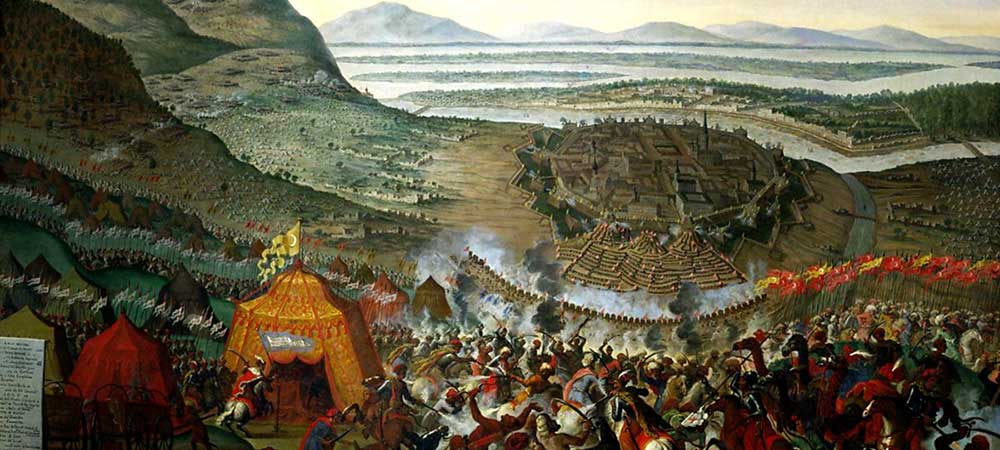
The Final Stand and Retreat from Vienna
The Siege of Vienna reached its climax with a desperate final assault orchestrated by Sultan Suleiman on October 14. Recognizing the dire circumstances faced by his forces, surrounded by the encroaching winter and dwindling supplies, Suleiman ordered what he envisioned as a decisive “all or nothing” attack. He promised substantial rewards for their bravery and success to motivate his troops. However, the fortified city proved impregnable. Vienna’s defenders, equipped with arquebuses and long pikes, repelled the Ottoman forces with adequate firepower and stalwart defense, decisively beating back the assault.
The failure of this last major offensive led Suleiman to reassess his position. By October 15, with his army weary and the prospect of a harsh winter looming, the Sultan was forced to decide to abandon the siege. Recognizing the impossibility of maintaining his position under such adverse conditions, he ordered his troops to retreat to Constantinople. This marked a significant turning point in the campaign, as the retreat signaled a physical withdrawal and a strategic defeat for the Ottomans in their attempt to expand further into European territories.
The journey back to Constantinople was fraught with hardship. Early snowfalls and relentless cold exacerbated the already challenging conditions. Muddy roads greatly hindered the movement of horses and camels, critical to the Ottoman military apparatus, slowing their progress considerably. In seizing the opportunity, Austrian forces pursued the retreating Ottomans, capturing many stragglers. Despite these attacks, the Austrians did not launch a full-scale counter-offensive.
The Ottomans finally reached Buda by October 26 and Belgrade by November 10. They arrived in Constantinople on December 16, ending their arduous campaign with a retreat that underscored the resilience of Vienna and the strategic limitations of the Ottoman military during the Siege of Vienna.
Repercussions of the First Siege of Vienna
The Siege of Vienna in 1529, though ultimately unsuccessful for the Ottomans, had significant repercussions for both the attackers and the defenders. For the Habsburgs, the siege underscored Vienna’s strategic importance and vulnerability. Despite suffering over 1,500 military casualties, which represented a significant proportion of the city’s defenders, the Austrians emerged with a heightened awareness of the need for robust defense systems against future Ottoman incursions.
This confrontation galvanized the European powers, leading to greater military cooperation against a common threat. It also highlighted the prowess of Vienna’s fortifications, which had withstood the formidable Ottoman onslaught.
On the Ottoman side, the losses were considerable, with around 15,000 soldiers wounded, dead, or captured. Though failing to capture Vienna, the siege inflicted heavy damage, part of a broader strategy by Sultan Suleiman to weaken the city for future attacks. This approach mirrored his tactics at Buda in 1526 and anticipated further campaigns, such as the one planned for 1532. However, this subsequent campaign never fully materialized due to effective resistance at Güns (Kőszeg) by Croatian Captain Nikola Jurišić, whose small force of 700-800 men managed to delay the Ottoman army until the onset of winter, forcing them to retreat and causing them to lay waste to Styria.
The failed siege also had diplomatic repercussions, fostering a rapprochement between Holy Roman Emperor Charles V and Pope Clement VII. This improved relationship culminated in the Pope’s coronation of Charles as Holy Roman Emperor in 1530. Meanwhile, the Ottomans portrayed the campaign’s outcome as a strategic victory, using it to bolster their imperial image with elaborate ceremonies and strengthen their hold over Hungary through their vassal, John Zápolya.
The Siege of Vienna demonstrated the limits of Ottoman logistical capabilities in Central Europe and marked a significant point in European military history, influencing future military and architectural developments across the continent.

